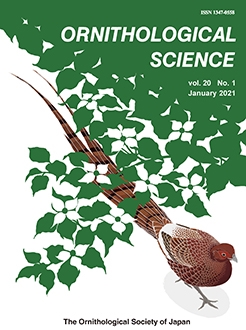In Malaysia, multiple land use by humans has caused substantial losses of wetland ecosystems, and shrinkage of the populations, habitat and food bases of avian species. However, studies of avian populations, especially of waterbirds, is important, allowing us to understand the complexity of the wetland ecosystem structure, and also develop appropriate management techniques with robust monitoring tools to ensure the ecological sustainability of wetlands. This study aimed to determine the eco-climatic factors influencing the occurrence of waterbirds and to develop habitat suitability models for thePaya Indah (PIW) and Putrajaya wetlands (PW), Malaysia. A distance sampling point count technique using stratified random design was employed to survey the wetlands from November 2016 to January 2019. A total of 57 sampling points at 14 lakes at PIW and 54 sampling points at 24 lakes at PW were chosen. An automatic linear modelling algorithm and geographic information systems were employed to compute the importance ratios of 17 eco-climatic factors (hydrology 9; climate 5; waterscape 1 and landscape 2). The results revealed that all individual and estimated indices for observed waterbirds were significant. The automatic linear modelling algorithm results for PIW waterbirds also showed that the maximum and minimum weights of the factors were land cover and water dissolved oxygen, while in PW they were atmospheric pressure and Normalized Difference Water Index (NDWI). The maximum and minimum weights of the factors for waterbirds in PIW were water turbidity and electrical conductivity, while at PW they were atmospheric pressure and six water parameters. Large areas of Putrajaya Wetland were classified as more suitable for waterbirds than Paya Indah Wetland due to the favourable water pH, atmospheric pressure and land cover (forage availability). Thus, the models' adoption as a management tool can help in the maintenance of the wetlands' habitat quality and management effectiveness of waterbird species.
BioOne.org will be down briefly for maintenance on 17 December 2024 between 18:00-22:00 Pacific Time US. We apologize for any inconvenience.
How to translate text using browser tools
7 April 2021
Environmental Factors and Spatial Heterogeneity Affect Occupancy Estimates of Waterbirds in Peninsular Malaysia
Chukwuemeka Onwuka Martins,
Oluwatobi Emmanuel Olaniyi,
Mohamed Zakaria
ACCESS THE FULL ARTICLE

Ornithological Science
Vol. 20 • No. 1
January 2021
Vol. 20 • No. 1
January 2021
Climate
distance sampling
hydrology
waterbirds
Wetlands




